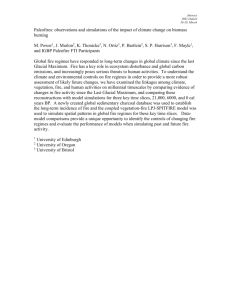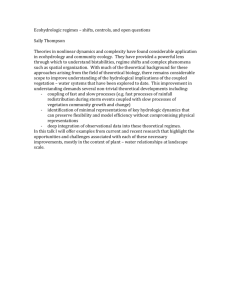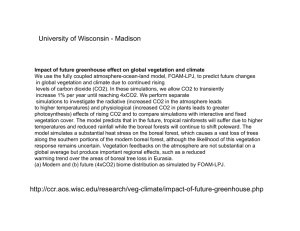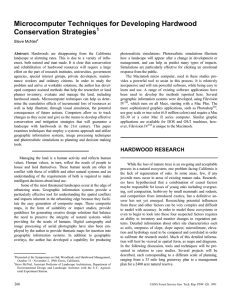Modelling palaeofires: ensemble simulations of fire regimes and
advertisement
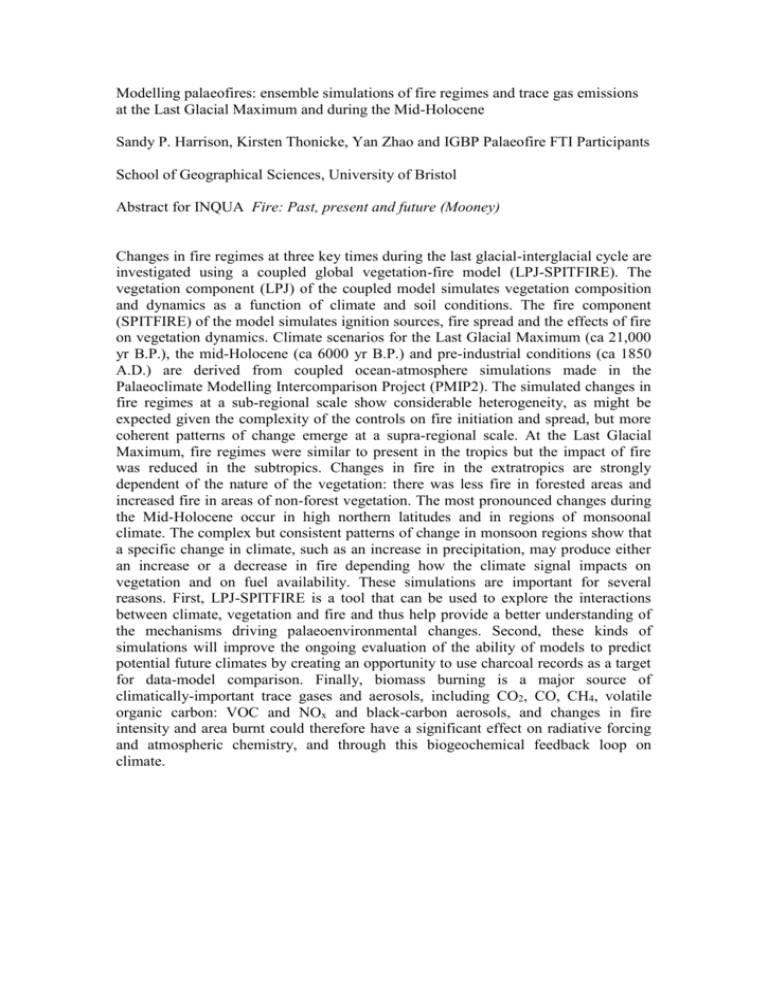
Modelling palaeofires: ensemble simulations of fire regimes and trace gas emissions at the Last Glacial Maximum and during the Mid-Holocene Sandy P. Harrison, Kirsten Thonicke, Yan Zhao and IGBP Palaeofire FTI Participants School of Geographical Sciences, University of Bristol Abstract for INQUA Fire: Past, present and future (Mooney) Changes in fire regimes at three key times during the last glacial-interglacial cycle are investigated using a coupled global vegetation-fire model (LPJ-SPITFIRE). The vegetation component (LPJ) of the coupled model simulates vegetation composition and dynamics as a function of climate and soil conditions. The fire component (SPITFIRE) of the model simulates ignition sources, fire spread and the effects of fire on vegetation dynamics. Climate scenarios for the Last Glacial Maximum (ca 21,000 yr B.P.), the mid-Holocene (ca 6000 yr B.P.) and pre-industrial conditions (ca 1850 A.D.) are derived from coupled ocean-atmosphere simulations made in the Palaeoclimate Modelling Intercomparison Project (PMIP2). The simulated changes in fire regimes at a sub-regional scale show considerable heterogeneity, as might be expected given the complexity of the controls on fire initiation and spread, but more coherent patterns of change emerge at a supra-regional scale. At the Last Glacial Maximum, fire regimes were similar to present in the tropics but the impact of fire was reduced in the subtropics. Changes in fire in the extratropics are strongly dependent of the nature of the vegetation: there was less fire in forested areas and increased fire in areas of non-forest vegetation. The most pronounced changes during the Mid-Holocene occur in high northern latitudes and in regions of monsoonal climate. The complex but consistent patterns of change in monsoon regions show that a specific change in climate, such as an increase in precipitation, may produce either an increase or a decrease in fire depending how the climate signal impacts on vegetation and on fuel availability. These simulations are important for several reasons. First, LPJ-SPITFIRE is a tool that can be used to explore the interactions between climate, vegetation and fire and thus help provide a better understanding of the mechanisms driving palaeoenvironmental changes. Second, these kinds of simulations will improve the ongoing evaluation of the ability of models to predict potential future climates by creating an opportunity to use charcoal records as a target for data-model comparison. Finally, biomass burning is a major source of climatically-important trace gases and aerosols, including CO2, CO, CH4, volatile organic carbon: VOC and NOx and black-carbon aerosols, and changes in fire intensity and area burnt could therefore have a significant effect on radiative forcing and atmospheric chemistry, and through this biogeochemical feedback loop on climate.
